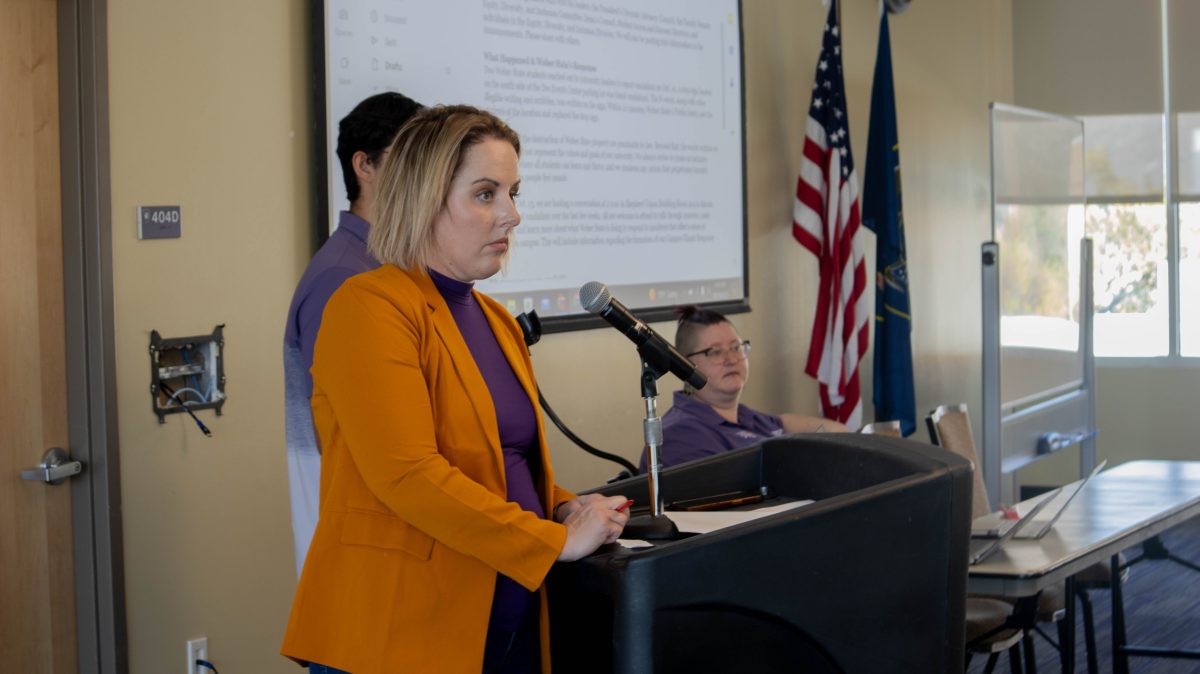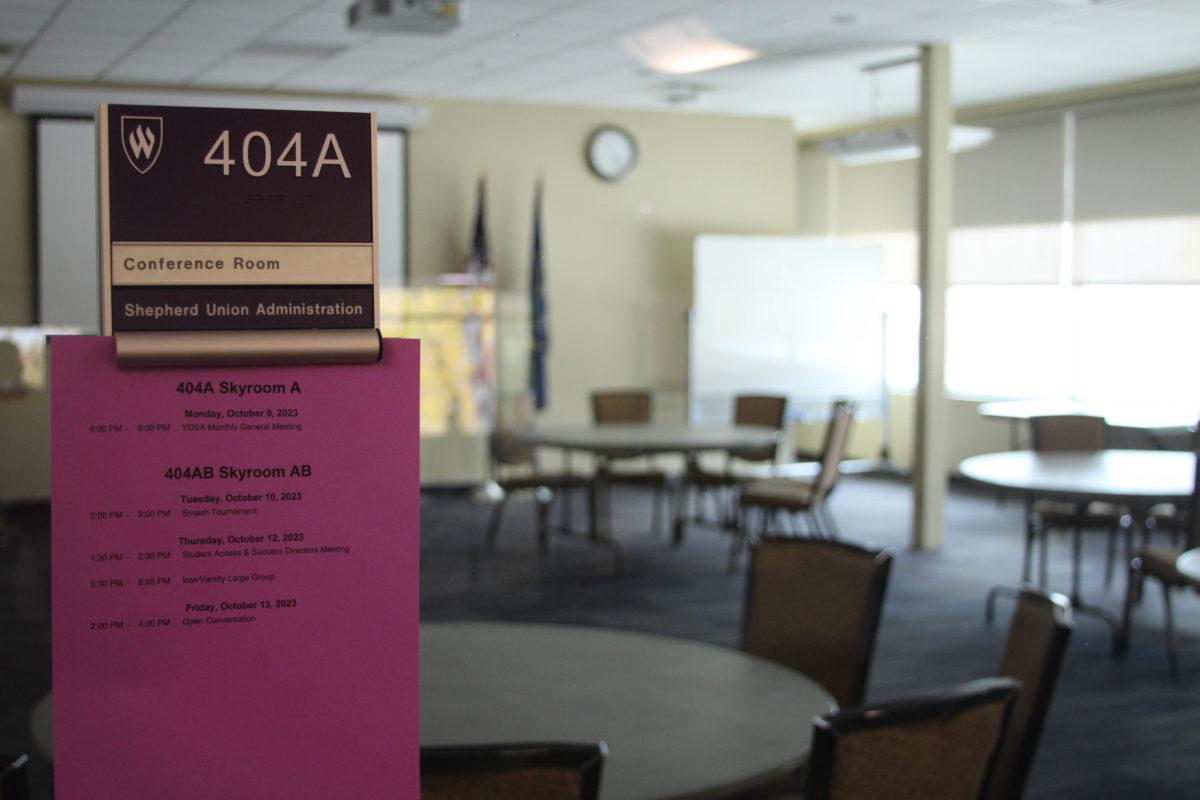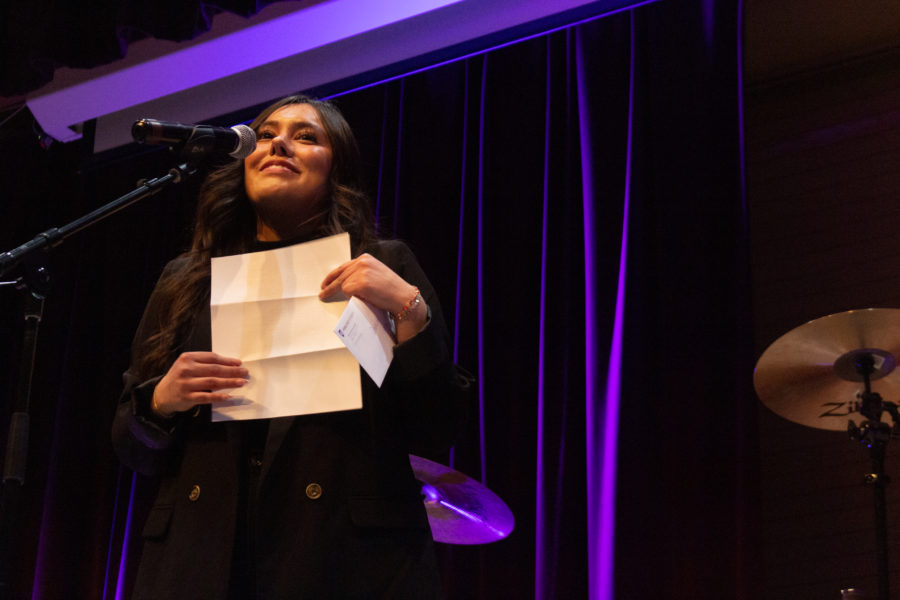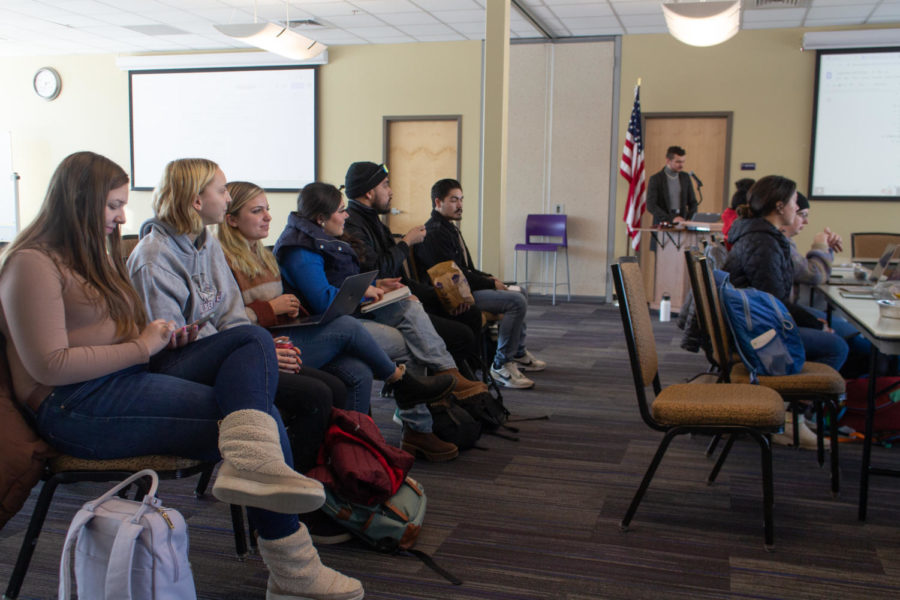The Weber State University Student Association Executive Board met on March 16 to discuss their group’s cohesiveness in event planning and organization.
The topic of discussion focused on each group’s ability to collaborate with other groups on different events and activities.
There are eight different student association groups represented on the executive board, and each hosts several events throughout the academic year. Often, those events are put on by the combined effort of different teams for a better supported effort.
Student Body President Greg Woodfield introduced the topic to help the board self-evaluate their ability to function properly while working with the other groups.
“A lot of the times, what would happen is that we would try to collaborate or do collaborations throughout the year,” Woodfield said, “but sometimes it was really hard to create something organically.”
In the 2016–2017 academic year, the WSUSA has had teams collaborate on events such as the service-oriented Martin Luther King Jr. Week, the Project Lead two-day conference and the blood-donating competition “Blood Battle.”
Some of the executives mentioned their desire to increase the amount of collaborated projects.
“I think it would be awesome to make an event where it’s strictly collaborative,” said Clubs & Organizations Vice President Marc DeYoung. “Everyone already has an idea of what you want to do, because it’s your event, then you collaborate on it. An event like that would be awesome to have planned.”
Other board members expressed a desire to first improve the collaboration process between teams, then increase event frequency.
“We have events that are mandated to specifically one committee. That’s where I think it’s hard collaboration-wise,” said Diversity Vice President Lame Kinikini. “People don’t feel like it’s their event.”

Past events have shown that combined efforts may not pan out as the organizers had hoped. For example, the WSUSA hosted a ’90s-themed dance party in November intended as a collaborated effort.
Board members mentioned this experience specifically because, while it was meant for different committees to work together, promotion and attendance was not as successful as they had originally hoped.
After discussions of collaborative event success had ended, board members then discussed the overall objective of teams working together, ultimately determining that the combination of their teams is not for the benefit of the WSUSA alone but rather for the overall student population.
“It should be collaboration with the student perspective in mind versus the WSUSA perspective in mind,” Woodfield said. “The golden question is, ‘How do we capture the very unique and diverse population here at Weber State?'”
Board members discussed that a collaborative mindset is more important to the success of events than working together due to obligation or duty.
They also mentioned the upcoming transition of a new executive board with the end of the school year approaching and how they can help those upcoming leaders plan to be more cohesive in meeting planning as well as event organization.












